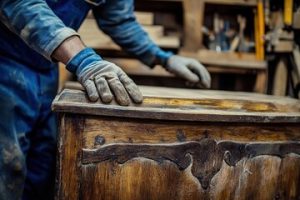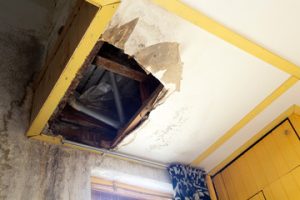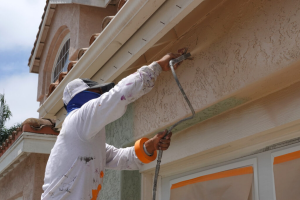Cabinet Refinishing Sacramento is evolving with surprising creativity and precision. The process is no longer limited to simple repainting. It has grown into a sophisticated redesign solution. Homes now gain style without losing sustainability.

One rising trend is thermally infused coatings for durability. These are heat-activated layers that form strong bonds. They resist scratches, moisture, and daily friction. The surface maintains elegance under constant use.
Color infusion has expanded beyond classic shades. Designers experiment with layered tones and micro-pigments. These finishes shift slightly depending on lighting. It adds depth and elegance to once flat surfaces.
Cabinet refinishing now embraces architectural contrast. Refinished cabinets may include edge framing in opposing colors. This brings dimension and bold visual statements. It’s modern, dramatic, and minimal all at once.
New application tools are making finishes seamless. Micro-fiber spray applicators reduce bubbles and drips. This results in flawless layers that mimic factory quality. Even older cabinets appear newly installed.
Digital grain replication has started gaining traction. Special overlays reproduce complex wood textures accurately. Users can choose exotic patterns without importing rare species. This boosts aesthetics while preserving nature.
Interior cabinet surfaces are also getting attention. Bright colors or reflective linings inside drawers are trending. These additions surprise users and elevate utility. Storage becomes stylish, not just functional.
Integrated scent layers are being explored subtly. Some finishing products now embed natural aromas. The scent activates gently when the cabinet opens. This creates multisensory luxury within ordinary routines.
Mood-responsive finishes are emerging as well. These adapt in appearance based on temperature or light. Cool conditions deepen tones, while warmth softens hues. It’s an interactive feature that feels alive.
Cabinet refinishing has begun to incorporate storytelling design. Each set tells a visual narrative using color and shape. Inspiration might come from landscapes, cities, or emotions. The result feels curated, not generic.
Soft-etch technology is redefining surface customization. It allows engraving subtle patterns into panels. These are tactile yet refined for contemporary homes. It bridges craftsmanship and modern simplicity.
Sound-absorbing materials are now layered beneath refinished doors. These reduce echo in large kitchens or busy rooms. Conversation feels quieter and more intimate. Acoustic design now touches cabinetry too.
Some cabinet refinishing projects include kinetic hardware. Hinges rotate differently or open with custom movements. Functionality meets theater in the everyday. It turns routine into delight.
Textile-inspired finishes are also rising in popularity. Surfaces mimic linen, canvas, or suede in appearance. They offer visual softness without compromising cleanability. It blends comfort with structure elegantly.
Refinishing is being used to harmonize open-plan homes. Cabinet colors now flow into adjacent living areas. This creates visual unity without strict repetition. Transitions become smoother and more natural.
Cabinet panels are now being layered in origami-like folds. These geometric creases reflect light at angles. It gives static surfaces a sense of movement. Texture becomes the new visual focus.
Refinishing is being combined with low-voltage light integration. Small strips are sealed beneath transparent finish layers. They glow subtly under motion or ambient change. It’s futuristic and surprisingly energy-efficient.
Repurposed metal shavings are used in textured coatings. These add shimmer while reinforcing durability. They’re eco-friendly and eye-catching under light. Industrial beauty finds its place in domestic design.
Matte-mineral mixtures are replacing synthetic shine. These provide a raw yet calming texture underhand. The cabinets feel earthy and refined simultaneously. It’s minimalism enriched by nature.
Cabinet refinishing is also exploring symmetry disruption. Handles are placed slightly off-center by design. Patterns skip expected lines or mirror asymmetrically. It sparks curiosity and breaks visual monotony.
Floating edge effects are a trending visual trick. Thin recessed shadows give doors a levitating feel. It makes cabinets appear lighter and more architectural. The result looks custom-built even on a modest budget.
Biophilic inspiration is shaping new refinishing palettes. Shades echo stone, sand, moss, and bark tones. These create connection to the outside world indoors. The calming atmosphere supports mindful living.
Cabinet refinishing has begun including climate-reactive panels. These change breathability depending on air moisture. Kitchens benefit from this subtle humidity balance. Materials contribute to comfort without technology.
Reclaimed elements are often worked into refinishing projects. A single vintage panel may become a focal point. This balances newness with emotional heritage. The story of the space becomes deeper.
Refinishing also allows for playful interaction in shared spaces. Chalkboard doors invite notes or doodles from family. Magnetic paint layers support rotating decorations. Cabinets become part of everyday expression.
The technique of silent closing has also evolved. Coatings reduce internal vibration on contact. Doors shut with nearly zero sound or bounce. Silence becomes part of the luxury experience.
Some finishes now incorporate heat resistance for appliance zones. Cabinets near ovens or toasters withstand greater temperatures. This prevents peeling and ensures longevity. Function and form both serve lasting design.
Refinishing methods now include flexibility zones. Certain joints use elastic finishes to allow seasonal shifts. This prevents cracking during weather fluctuations. Cabinets stay pristine throughout the year.
Material layering is used to achieve unexpected optical effects. Depth is simulated using transparent and reflective coats. The illusion of three dimensions enhances flat cabinetry. It’s visual art in utility form.
Mathematical ratios are influencing cabinet symmetry. The golden ratio is subtly applied to panel sizing. The result is unconsciously pleasing to the eye. Beauty is built on invisible structure.
Under-cabinet visuals are also receiving refinishing upgrades. Previously ignored bases now include contrasting colors. This adds architectural grounding and visual completion. Even hidden parts feel intentional.
Digital carving has allowed artistic expression on cabinet faces. Artists use software to engrave patterns via CNC tools. Every line is precise, personal, and permanent. Refinishing becomes a true design collaboration.
Curved cabinet edges are being reintroduced with modern materials. Finishing products now bend without cracking. This softens the visual footprint of a room. The aesthetic is fluid rather than boxy.
Thermal color imprinting is an emerging feature in cabinet upgrades. Designs appear under specific heat conditions. Patterns become visible during use and fade after. It’s a dynamic interaction with time and activity.
Cabinet refinishing contributes to inclusive design innovations. Lever handles replace knobs for arthritis-friendly access. Textured panels assist visually impaired users. Style is matched with thoughtful functionality.
Layered gloss maps can now direct attention intentionally. Specific areas of the cabinet reflect more light. This guides the eye across focal points. The technique brings a gallery feel into the kitchen.
Digital measuring tools ensure millimeter-accurate refinishing. Laser scans calculate wear and curvature. Every new layer adjusts for subtle imperfections. Craft meets science at every corner.
Outdoor-grade finishes are being adapted for interior refinishing. This benefits damp or tropical environments indoors. Cabinets stay sealed against moisture without heavy lamination. Longevity improves in unseen ways.
Cabinet interiors now include user-led organization systems. Shelves reposition based on magnetic rails. Drawers adjust height with snap settings. Refinishing no longer stops at the surface.
Refinishing workshops are growing in community-driven spaces. Residents learn hands-on skills for their homes. Skills transfer across generations and communities. Cabinets become symbols of local creativity.
Reinforced corners are hidden inside rounded edges. These absorb impact from dropped items or child use. Strength hides behind elegance. It ensures family-friendly durability without compromise.
Dynamic QR codes can now be embedded in finishing layers. Scanning them accesses warranty info or maintenance tips. This combines tech with furniture in subtle ways. Help is always one scan away.
Refinishing is inspiring furniture crossover. Cabinet techniques apply to tables, beds, and shelves. Rooms feel cohesive and curated. Design language becomes shared across all surfaces.
Color-coded finishes are aiding memory-care environments. Specific hues trigger recognition for residents. Cabinets support independence through subtle cues. Refinishing becomes a caregiving tool.
Cabinet doors now include kinetic inlays. These shift texture slightly with movement. Hands engage with a cabinet in new ways. It’s a quiet joy discovered through touch.
Edge lighting enhances refinished cabinet layers. Light strips installed within grooves glow softly. Cabinets seem to float with gentle halos. Practical access meets artistic impression.
Cabinet refinishing continues to push the boundary of what interiors can be. It transforms utility into art, repetition into uniqueness, and old forms into new meaning. As people seek connection, sustainability, and beauty in their living spaces, this process becomes more than a cosmetic change. It becomes a language of design that is both personal and progressive.

